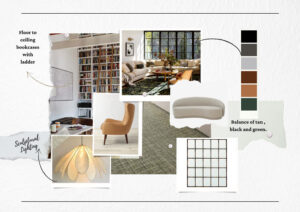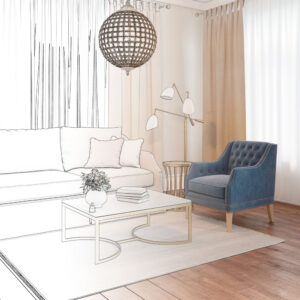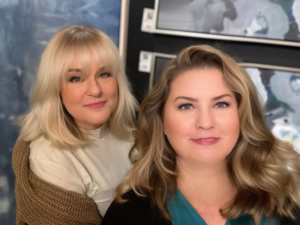One of the most common challenges people face when designing their home is not knowing what they like or how they want their space to look. While functionality is crucial, let’s focus on the fun part—designing a space that reflects your personal style.
In my previous post, I suggested saving images, screenshots, or Pinterest Pins of everything that catches your eye to help identify your home’s color palette. If you’ve been gathering your inspiration, now’s the time to put it to work by creating mood boards that will guide your home design.
What Is a Mood Board?
A mood board is a visual tool used in interior design, typically made up of a group of images. It helps you narrow your focus and uncover a central theme for your space. Essentially it’s just a collage of images. How is that going to help me, you ask? Gathering all these images into one place will narrow your focus and help on the central themes. Kind of like an interior design murder board 😂.
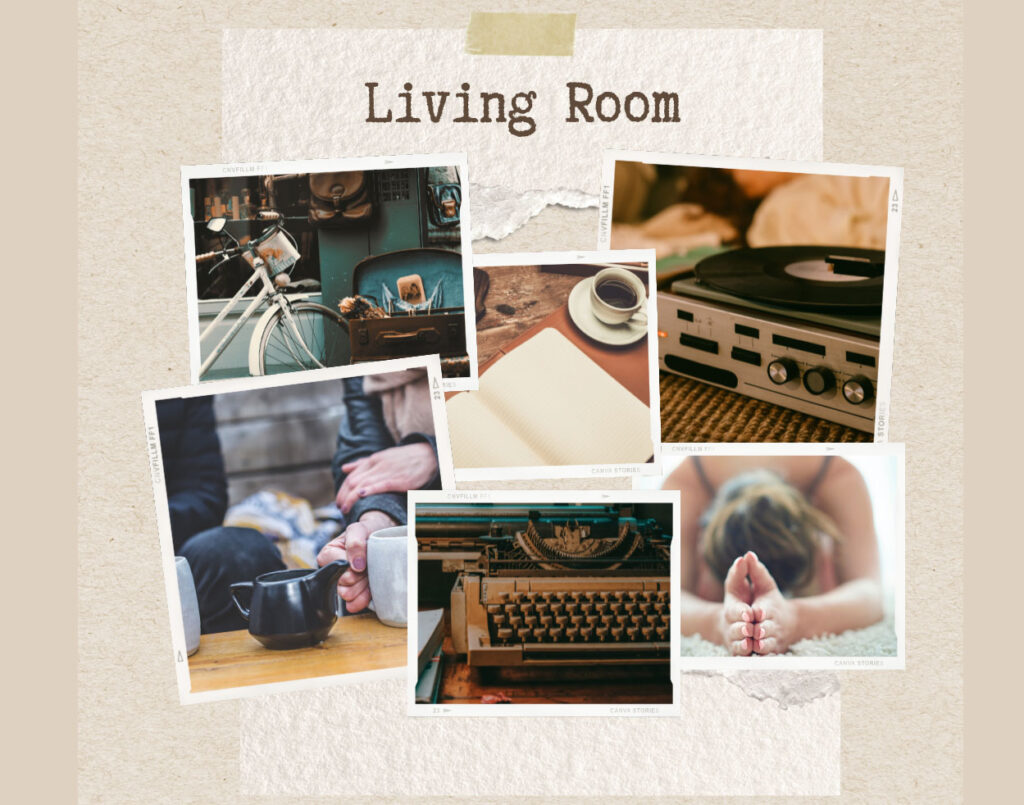

1. The Lifestyle Mood Board
A lifestyle mood board is an excellent starting point for defining the overall feeling and color scheme of a space. This type of board typically features non-room, non-furniture images. Instead, it includes photos that represent your interests, hobbies, and desired vibe for the room.
For example, if your mood board includes vintage travel photos, yoga mats, and retro album covers, it suggests you’re aiming for a relaxed, vintage-inspired living room that reflects your love of travel, music, and wellness. With this knowledge, you can start searching for furniture that matches this aesthetic—think pre-loved or antique-style pieces. This board also helps with room functionality—perhaps you’ll create a space for yoga or writing. And, of course, it also helps up determine the color palette.
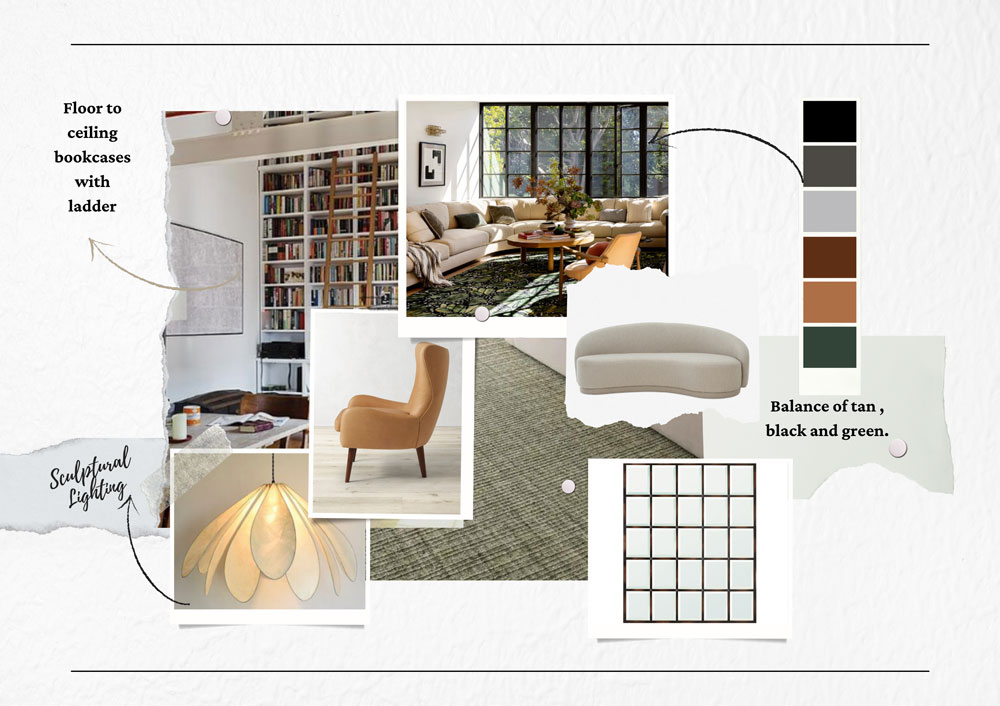
2. The Ideal Room Mood Board
The ideal room board is where you place images of your dream furniture and room setups. This type of mood board is crucial for keeping your home design on track, especially when shopping for new items.
When you’re shopping for furniture or browsing Facebook Marketplace, you can refer back to this board and ask, “Will this piece fit into my overall design plan?” It’s a fantastic way to avoid impulse buys that don’t fit your home’s aesthetic. This board acts as a visual checklist, ensuring each new purchase complements the room as a whole.

3. The Design Board
At Hive, we frequently use design boards during the final stages of the design process. This board helps us visualize how individual pieces of furniture, décor, and accessories will look together in a room. It’s the perfect way to ensure your choices create a cohesive look.
This board can be particularly useful as you start finding items you love—like a unique armchair or a vintage rug. Adding these pieces to your board allows you to see whether they vibe with the rest of your design before making a purchase. In some cases, a standout piece might even inspire you to shift the design direction.

How to Make a Mood Board for Your Home
Creating mood boards is simple and can be done using a variety of tools, depending on your preference. Here are some of the best options:
- Canva: At Hive, we love using Canva for creating digital mood boards. It’s user-friendly and even the free version offers great functionality. You can even upgrade to the paid plan to access extra features like background removal.
- Pages for Mac: Another great free option for Mac users is Pages. It’s easy to use and allows you to create stunning boards in no time. Background removal and basic image editing are built into the program.
- Scissors and Glue: For those who prefer hands-on creativity, a physical board made with scissors, glue, and printed images is a fun, tactile way to organize your design ideas.
Why Mood Boards Are Essential for Interior Design
Using mood boards for interior design is a fantastic way to gather and organize your inspiration. They help ensure that every piece you choose—from color schemes to furniture—aligns with your overall vision. By creating lifestyle, ideal room, and design boards, you can turn your inspiration into a cohesive and well-planned home design.
Final Thoughts
Mood boards are a powerful tool for anyone designing their home, whether you’re working with a professional or taking on a DIY project. By visualizing your ideas and staying organized, you’ll be able to create a space that truly reflects your personal style.

